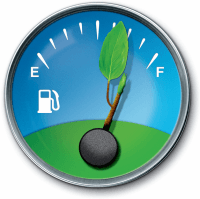Categories
 On Thursday, AAA had the opportunity to sit down with President Obama, following his speech on energy issues in Cushing, Oklahoma, to discuss the topic of rising oil and gasoline prices.
On Thursday, AAA had the opportunity to sit down with President Obama, following his speech on energy issues in Cushing, Oklahoma, to discuss the topic of rising oil and gasoline prices.
Gasoline prices across the United States continue to rise. On Tuesday the current national average price for a gallon of regular self-serve gasoline is $3.90. This price is six cents more expensive than one week ago, and 27 cents more expensive than one month ago. The national average price at the pump has now risen for 18 consecutive days and has only declined on three of the past 60 days.
The President outlined the two key issues that have pressured prices higher this year: tensions with Iran and increasing global demand for crude oil. Bearish developments for oil prices on both of these issues last week were seen as the primary stories pressuring prices lower.
As President Obama noted to AAA, uncertainty in the Middle East and Iran is “adding a $20 or $30 [per barrel] premium to oil prices.” Some of this “risk premium” was alleviated on Tuesday as Kuwait and Iran issued assurances that the Strait of Hormuz, through which 20 percent of the world’s oil flows, would remain open, and Saudi Arabia stated that it was prepared to increase production along with their expressed preference for cheaper global prices.
While news late in the week confirmed that Iranian exports have decreased by some 300,000 barrels per day this month — following increased sanctions imposed by western governments — this was largely expected and did not raise enough of a supply concern to make up for early week declines in prices.
President Obama also highlighted the increasing demand from countries like China and India. While economic growth in these countries is expected to pressure global demand for oil higher, manufacturing data released last Thursday showed signs that Chinese economic growth may be slowing. Slowing global economies would be expected to demand less crude oil, which places downward pressure on futures prices, as was the case last week.
If your family or your business has been affected by this year’s rising gas prices, then you may want to consider purchasing a GPS fleet tracking system. A fleet GPS tracking system can provide an ROI in less than six months and immediately reduce fuel consumption.
In today’s tough economic climate, profit margins are slim and companies must implement as many cost-saving initiatives as possible. In order to stay competitive, companies have to look very closely at every penny spent. Utilizing a GPS fleet tracking system can be one of the most cost effective means to manage and reduce fuel consumption. A GPS fleet tracking system can help the average fleet reduce fuel costs by up to 20%.
Complete details of the AAA’s discussion with President Obama can be found on the AAA Newsroom.










 Back to Blogs
Back to Blogs


